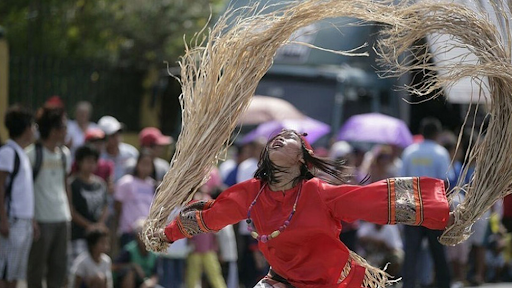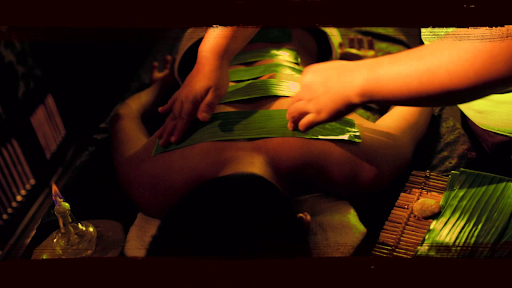
Golanv Circle
Moon Day
Magick & Medicine
World Studies 102
Pre-Colonial Philippines
and
Filipino Witchcraft
by Lady Sheryl DeSanto
“The Philippine culture is a uniquely indigenous culture that has been neglected for aeons because of the colonization these people distorted their culture enough so that it is almost unrecognizable in the modern world. What the Philippines is missing is a sense of legacy and pride in their uniqueness. Instead, the people have fallen under the spell of the Western world, and their priorities and goals are a hollow echo of the old, outmoded values of Western civilization. The Filipino people are starved for an identity that goes beyond Spain and America. They don’t want to be some other stepchild. They deserve to claim their inheritance.”
–Lumiel Kim-Hammerick
Spanish Colonization in the Philippines
Ferdinand Magellan claimed to have discovered the Philippines in 1521. He was a Portuguese explorer who was working for Spain at the time. A native leader named Lapulapu resisted the colonization by Spain and fought Magellan and his men, killing Magellan and sending what was left of his troop back to Spain. Lapulapu’s rebellion delayed the Spanish occupation of the islands by 40 years.
The name “Philippine Islands” comes from Las Islas Felipinas, named in 1542 in honor of Prince Felipe II of Spain who would later become King. The islands were actually named 20 years before Spain even gained a foothold on the islands. The people, originally called indios (Indians), were eventually known as Filipinos. In 1978 a senator in the Philippines proposed changing the name of the Philippine Islands to Maharlika. Maharlika is a Sanskrit word, which has a few translations in English; “A small place of great people,” or “A small container filled with great things,” or “nobly created,” or “born great.” A Maharlikan is a person who is born noble and free. Philippine Presidents Marcos (1965-1986) and Duterte (2016-2022) supported this name change. To this day it is still a topic of debate and the name, Philippine Islands still stands.
Prior to the Spanish colonization of the Philippines, many other countries and cultures had already tried their hand at colonization starting with India, followed by Islam, China, Japan, then Spain, and lastly America. Each time a new country or culture arrived, they would try to colonize and wipe out the spiritual existence of their predecessor by destroying native shrines, statues, temples and by stealing artifacts.
Pre-Colonial Spirituality
Prior to Spanish colonization and Catholic conversion brought by Spain, the native people of the Philippines believed in Animism – the belief that all things possessed a spiritual essence. The spirits were called Anito. Certain Christian doctrines taught that Animism is the work of the devil, but the indigenous people did not originally believe this as they had a strong connection and attunement to the spirit world and anitos.
Filipino Witchcraft
So, when did witchcraft appear in the Philippines? It is believed that Spanish colonization sparked the appearance of the “witch” when Spanish friars accused Filipina Babaylans of witchcraft. The leadership roles of Babaylans are multifold: warrior, healer, priestess, and sage. Babaylans were predominantly women and transvestites in pre-colonial Philippines. They were very powerful -- officiating rituals and ceremonies and honoring ancestors and spirits. They were the keepers of sacred and ancient knowledge that was passed down through generations. The healers had such power and following that the Spanish colonizers feared them as competition. So, in an attempt to take away their power and convert the local people to Christianity, the Spanish friars instilled fear in the people by accusing these powerful healers of consorting with the devil and practicing witchcraft.
“Philippine indigenous communities recognize a woman (or man) as a Babaylan, someone who has the ability to mediate with the spirit world, has her own spirit guides, and is given gifts of healing, foretelling, and insight. She may also have knowledge of healing therapies such as hilot (shamanic ancient Filipino healing), arbularyo (folk healer). She is a ritualist, a chanter, a diviner. She has the gift of traveling to the spirit world or non-ordinary states of reality in order to mediate with the spirits. Babaylans are called by other names in the other languages of Philippine indigenous communities: Mombaki, Dawac, Balyan or Balian, Katalonan, Ma-Aram, Mangngallag, Mumbaki, Mambunong.
Filipino people began to believe what their colonizers taught them—that many elements of their culture and beliefs were inferior and “wrong” and Babaylans and their teachings became forgotten Filipino traditions — this is the beginning of the fragmentation of Filipino soul. Colonial mentality took its hold among the minds of Philippine people. Many educated Philippine people began to look down on their indigenous culture and strived to be less and less native and more and more western, like their colonizers.
Babaylanes managed to survive those oppressive times by going underground or by working within the fringes of society, looked upon with measures of scorn, suspicion and fear.”
--Center for Babaylan Studies
Babaylanes don’t consider themselves witches. They are regarded as Shamans. As stated above, the label, “witch” was used by the Spanish Friars to separate the people from their community leaders (Babaylanes and other healers) and to instill fear.
Prior to Spanish colonization, there were Practitioners of magick, other than Babaylan, who were also called witch. They are a variety of people with varying occupations and are called by different names depending on their ethnic group. For the most part, they are healers.
“Witches” in the Philippines
Katalonan: Tagalog Priest/Priestess
The Katalonan are the Tagalog equivalent to the Visayan Babaylan. They performed public ceremonies for prosperity, fertility, and seasonable weather for the community. They diagnosed and cured ailments. They also performed black magic.
Albularyo: Filipino Witch Doctor
An albularyo is a Filipino witch doctor, folk healer, or medicine man. They’re healing abilities have been passed down to them from an elder or acquired from a supernatural being or higher power. They are the equivalent to a general practitioner. Other names for Albularyo are: manghihilot (a person who administers healing massage), maggagamot (a person who heals). Albularyos are mainly found in rural areas where traditional doctors are expensive and hard to find.
Mangkukulam: The Feared Ones
A Mangkululam is a practitioner of magic who performs Kulam, a form of Filipino folk magic similar to voodoo. They are believed to perform black magic. People come to them for spells of revenge and justice, and sometimes even love potions. They are feared by rural and city folk. They are the negative counterparts to the Babaylan. Often a Babaylan is called in to reverse the spells and curses of the Mangkakulum.
Manghihilot: Healing Hands
A manghihilot is someone who performs hilot. Hilot is a type of chiropractic massage or a form of Reiki healing.
Magpapaanak
The magpapaanak is similar to a midwife. They are also popular among the rural folk who have a hard time getting to and paying for a traditional doctor. They get their training from a trained practitioner who is a relative, friend, or neighbor.
Many of these healers are a dying breed as modern medicine and technology continues to grow and expand. Hopefully, some of our younger generation will be fortunate enough to have a trained practitioner hand them the torch and train them, so they can continue to honor the traditions and practices of our ancestors.
Witchcraft in the Philippines Today
The Philippines is comprised of over 7,000 islands, with many different tribes and communities, beliefs, languages and cultural practices. For the most part, due to Spanish colonization, Catholicism is the religion of choice, with 86% of the Philippine population practicing Catholicism. Only 0.2% practice tribal religion.
According to Kristine Ibanez, in her article posted in otherworldly.com about Witchcraft in the Philippines, “Asian witchcraft isn’t as abundant, informative, or welcoming as western witchcraft. Though we have a long way to go as a collective to revive and honor the old ways, majority of the modern witches you’ll find here in the Philippines are either old school like the folk healers… or Neopagans mostly found online with a practice rooted in pre-christian European witchcraft.”
Sources:
Center for Babaylan Studies
Other Worldly
Other Worldly Oracle
Way of the Ancient Healer: Sacred Teachings from the Philippine Ancestral Traditions
Moon Day GQ2
General - Journal - Book of Shadows
SUBMISSION: GQ2 MON HILOT HEALING (Due by Sunday)
After reading this offering from Lady Sheryl in the Lesson above,
all Golanv Practitioners are asked to each light a candle
for “Healing” of the Healers,
especially for the people of the many island nation
that is now referred to as Philippines.
If you are unable to utilize candles in your home, please draw a Healing candle.
You have until Sunday to submit a PICTURE of your literal candle lighting,
or a SENTENCE of Invocation for Healing recited during other Magicks or Medicine, such as Meditation with a drawing..
EMAIL
Three Circles Medicine™
Please utilize the above email link
IF NO BUTTON IS PRESENT
to receive full Submission credit.





